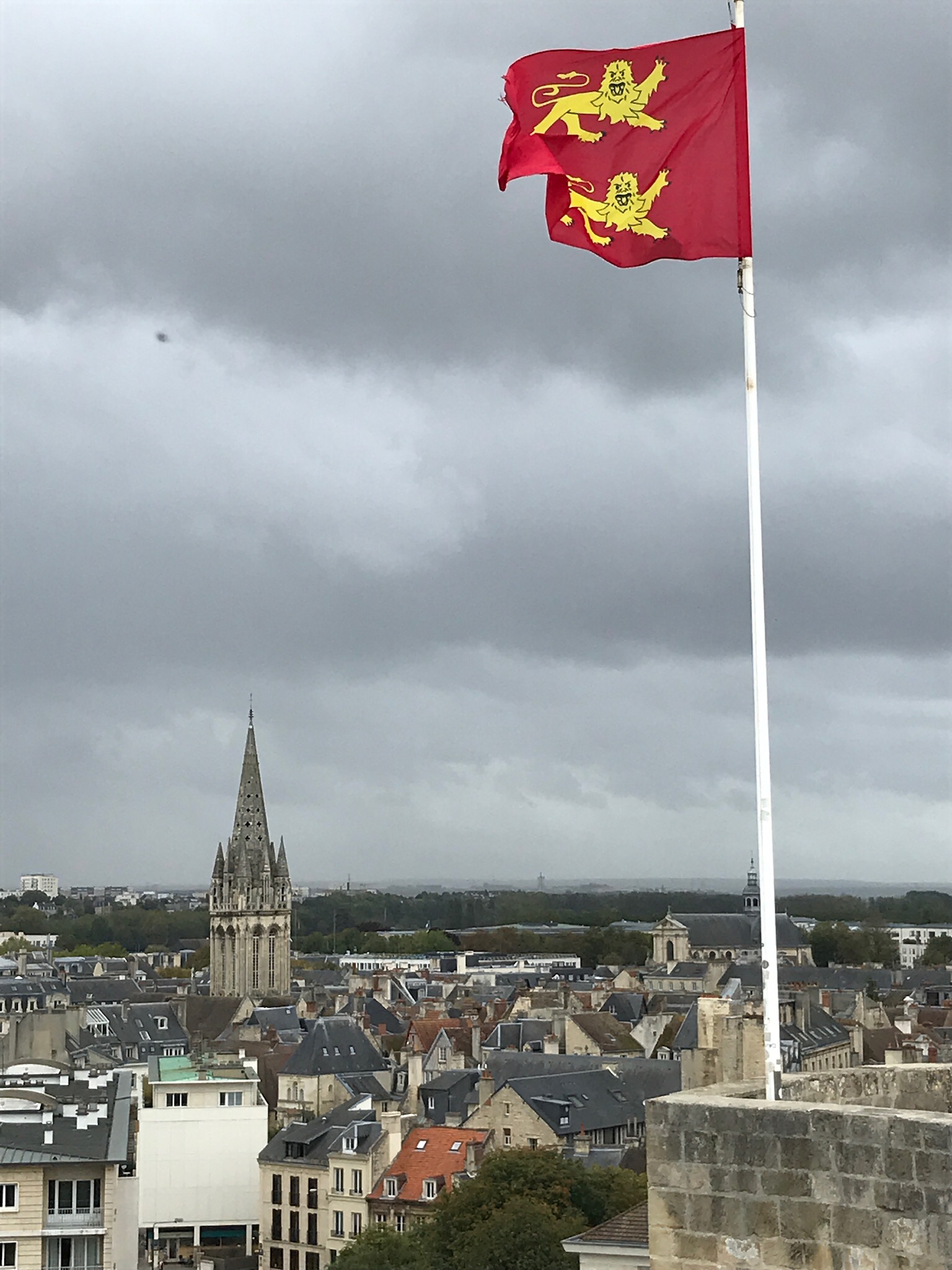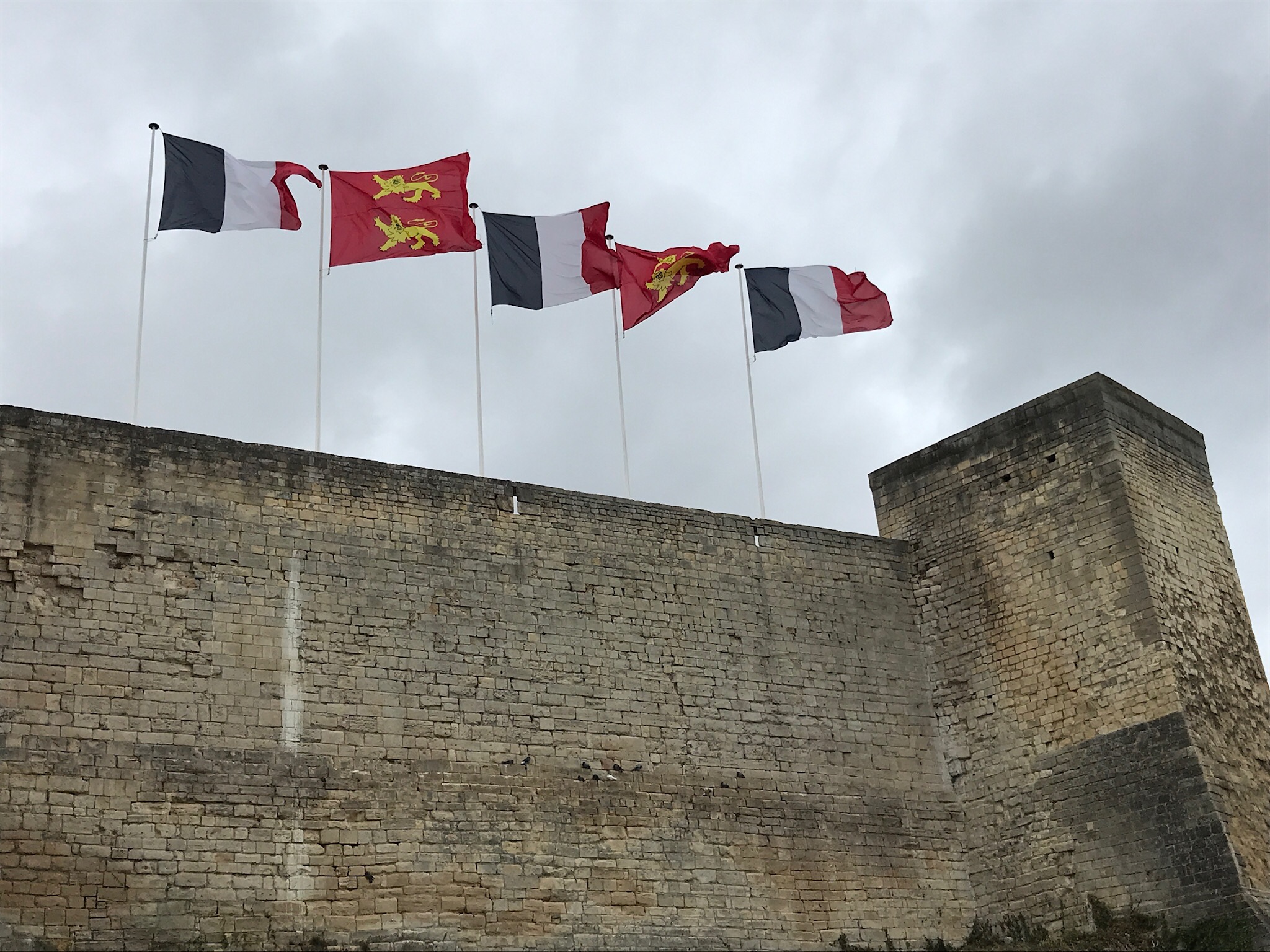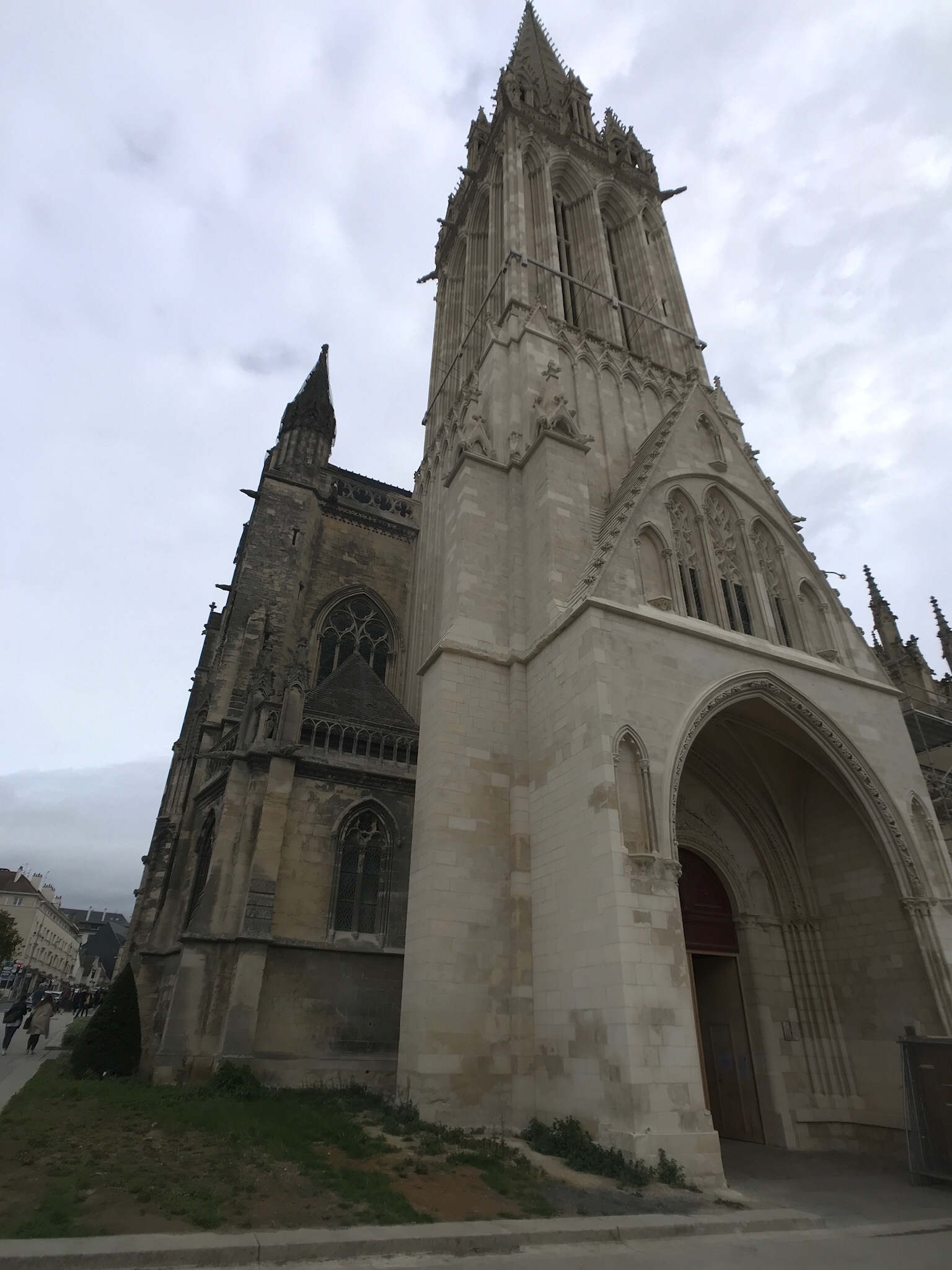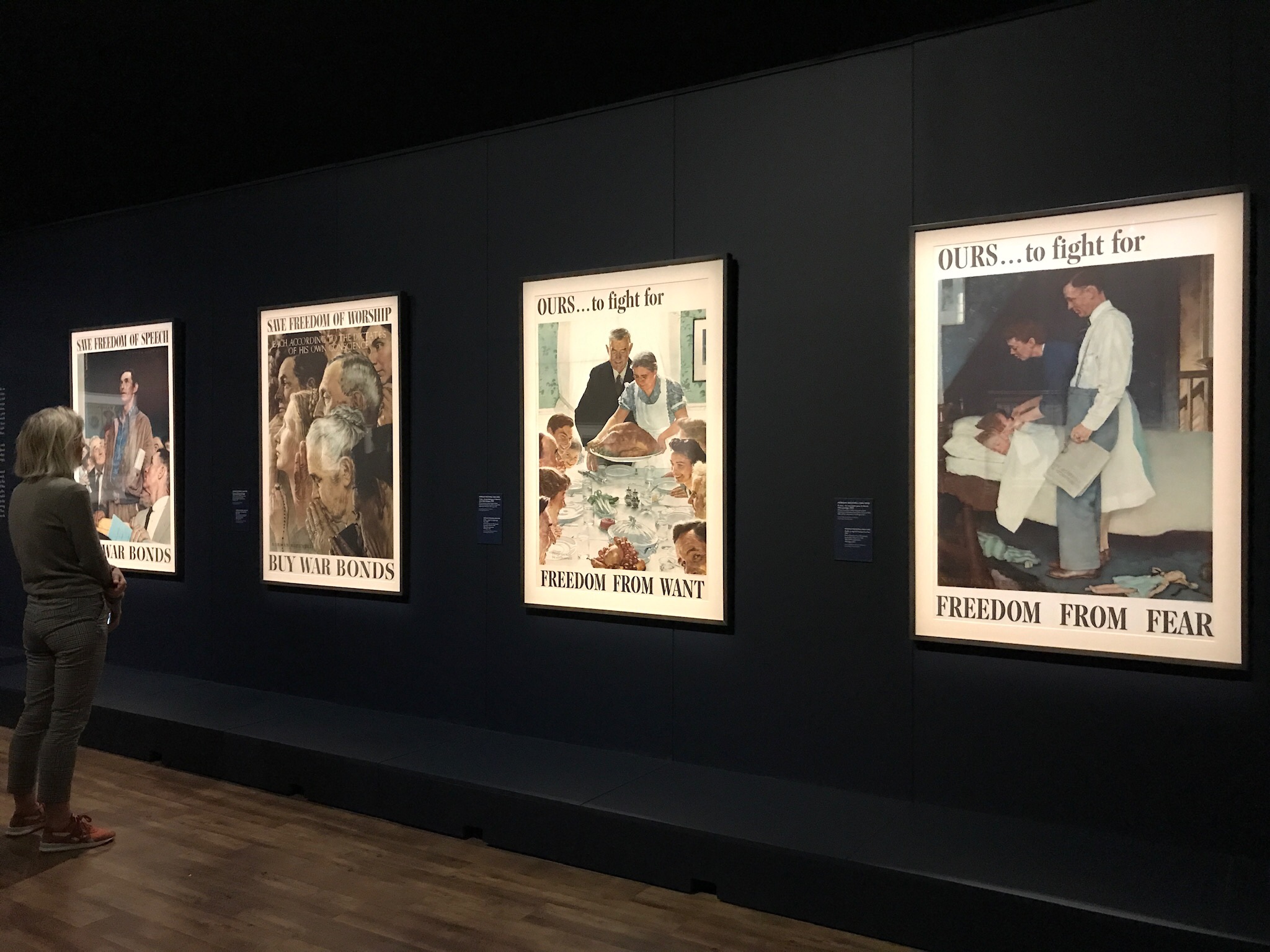4 October 2019
I admit, I am underwhelmed with the city of Caen. However, it’s an easy reach by train from Paris, it has some historical sites, one terrific museum, and is a good location from which to rent a car with which to explore Normandy. And, I should not be too critical. Post-War reconstruction of complete districts led to its urbanization and inevitable loss of historic Norman charm.
Caen was liberated from the Nazis in early July, a month after the Normandy landings on 6 June 1944. The goal was for British and Canadian troops to capture the town on D-Day. However they were held up north of the city until 9 July, when an intense bombing campaign reduced to rubble 70% of this historic Norman city and killed 2,000 French civilians who had chosen not to evacuate as advised by coded messages which warned of the imminent invasion.
I arrived at the Gare de Caen, walked across the street to my hotel, then proceeded to explore. The historic center of Caen is an easy walk from the train station. And within the city itself there are several major churches and a Castle. Stormy weather, intermittent sun and brisk winds remind me that Caen is only 10 miles inland from the English Channel and has always enjoyed a strategic location and importance in history.

Caen is best known for its historical buildings built during the reign of William the Conqueror, who was buried at Caen’s Abbey of Saint-Étienne in 1087. William is responsible for both Saint-Étienne, also known as Abbaye aux Hommes (“Men’s Abbey”) and Sainte Trinité/Abbaye aux Dames (“Ladies’ Abbey”), where his wife Matilda is buried. Both the construction of the abbeys and his burials tell quite a story. William agreed to build them as a part of his reconciliation with Pope Leo IX who was displeased when William married his cousin Matilda. Matilda proceeded William in death so was not present when they stuffed his decomposing body into too small a grave. They write that the odor was most unpleasant. The indignity continued with further repositioning and reburials until but a thigh bone remains.
About 1060, Willam built the impressive Château de Caen, whose ramparts command a wonderful view over the city and its many church steeples. William became the powerful Duke of Normandy in 1035 and the castle became the centre of his court. (He was crowned King of England in 1066.) It sits atop a commanding rocky hill in the center of town. Over the moat and through St. Peter’s Gate, I find a small Norman church, a fine art museum, the Musée de Normandie (yes, about the history of Normandy), and a wonderful special exhibit called Images of Caen.

As its name foretells, Images of Caen is composed of paintings, watercolors, lithographs and photos of monuments, churches and streets of Caen through the ages. I note how little has changed. Here used to be a canal of waters just below, the Odon, which no longer flows through city center. It appeared central to many villagers’ lives. Also, central to numerous scenes is the massive structure of Church of Saint-Pierre directly below the castle.
Church of Saint-Pierre or Saint Peter is a commanding structure in town center. Building took place between the 13th and 16th centuries, thriving throughout the middle ages. It was here that King Henry IV put an end to what seemed like endless religious wars by renouncing the Protestant religion. It’s soaring spire was destroyed on 9 July 1944 by a British Navy shell aimed at German forces, but has been rebuilt. Currently, a massive cleaning project is removing centuries of grime. The interior is less impressive with some original stained glass, vaulted ceilings and highly stylized designs in the chapels.

Many spires and towers dot the skyline of Caen. The Church of Saint John/Saint-Jean’s stained glass windows and vaulted ceilings are quite nice. And the marvelous multiply spires of the Saint-Étienne, or Abbaye aux Hommes can be seen far and wide. Perhaps though, the main reason for visiting is four miles northwest of the train station: The Mémorial de Caen.
Mémorial de Caen is a combination museum and war memorial which graphically chronicles the violence and tragedy of war, focusing on the violence perpetrated Man on Man during the 20th Century and particularly World War Two and beyond into the Cold War. It highlights the devastating Battle for Caen waged after the Allied invasion of Normandy in June 1944. The museum guides you from WWI through the horrors of war brought about over and over again by extreme nationalism and misplaced ideologies, using propaganda posters, memorabilia, film strips and excellent videos.

A special temporary exhibit is “Norman Rockwell and Roosevelt: et les quatre libertés.” At the heart of the exhibit are the Rockwell paintings drawn during the war to illustrate Roosevelt’s 1941 State of the Union Address, forever known as the “Four Freedoms” Speech. Roosevelt proposed that people “everywhere in the world” ought to enjoy: Freedom of speech and worship, freedom from want and from fear. These goals were beautifully articulated by Rockwell and are some of the most easily recognized scenes he painted. The excellent exhibition includes many of Rockwell’s paintings. Though it closes in Caen at the end of October, it will open in Houston in December, Denver in May 2020, and goes home to Stockbridge MA in September 2020.
If there was any region in Western Europe best prepared to demonstrate the evils brought by nationalism and war, it would be Normandy. For the next week, I will be exploring the peninsula made infamous for eternity on 6 June 1944.
From the heart of our land flows the blood of our youth, given to you in the name of freedom. – US Armed Forces Memorial Garden, Mémorial de Caen
0 Comments